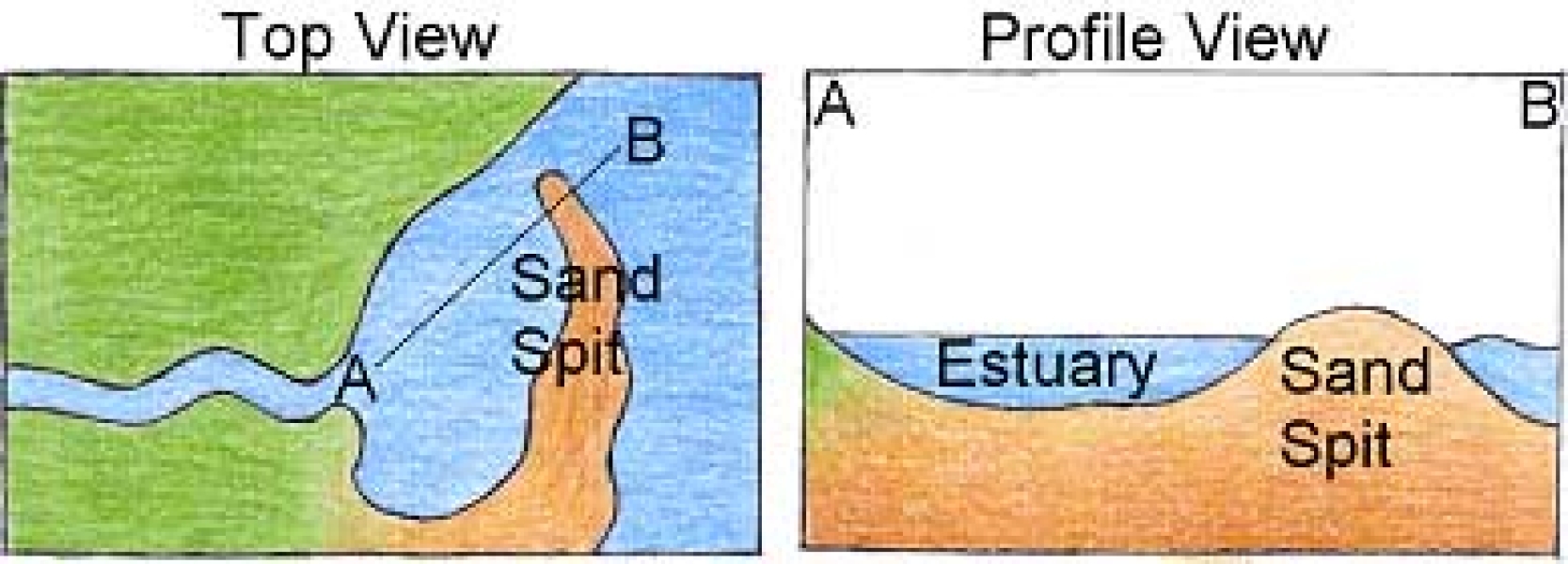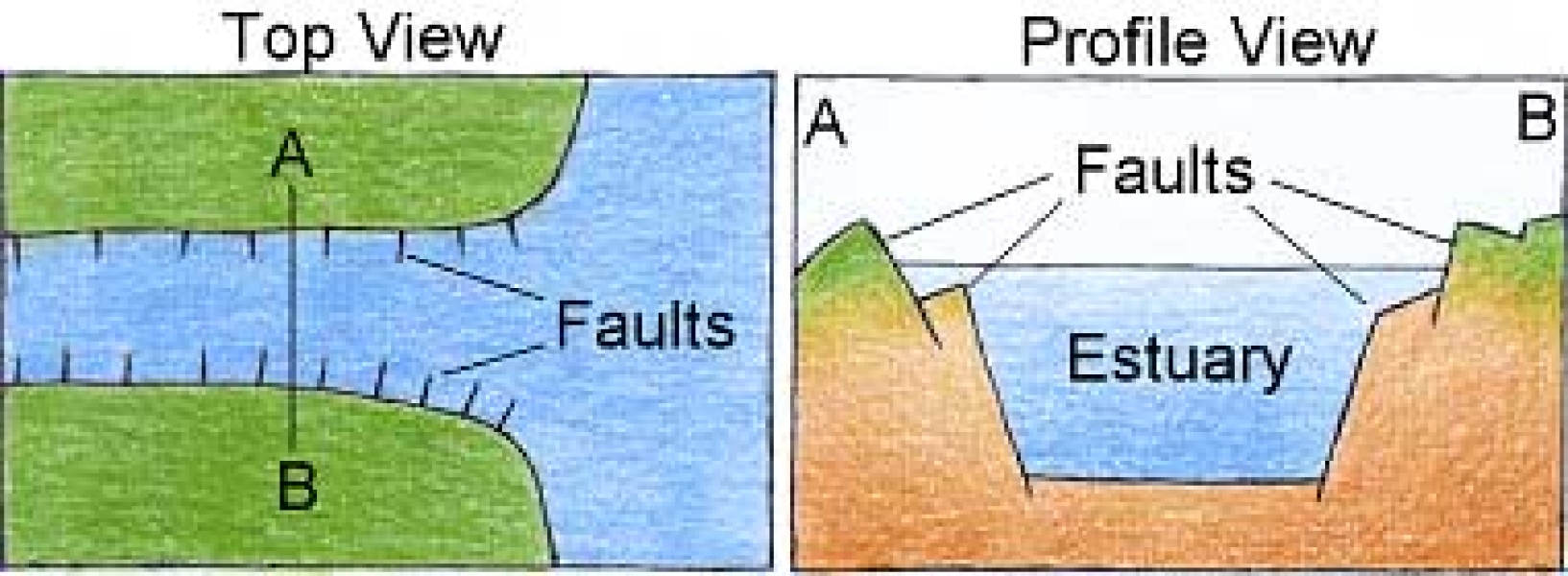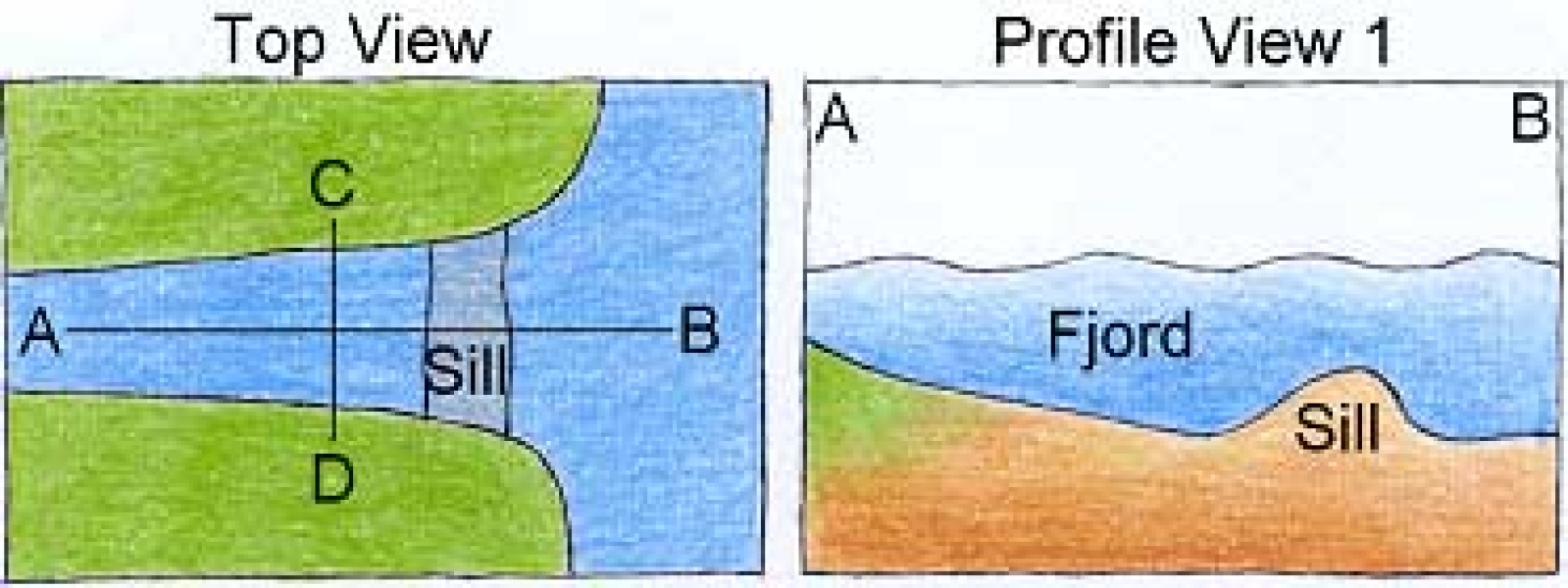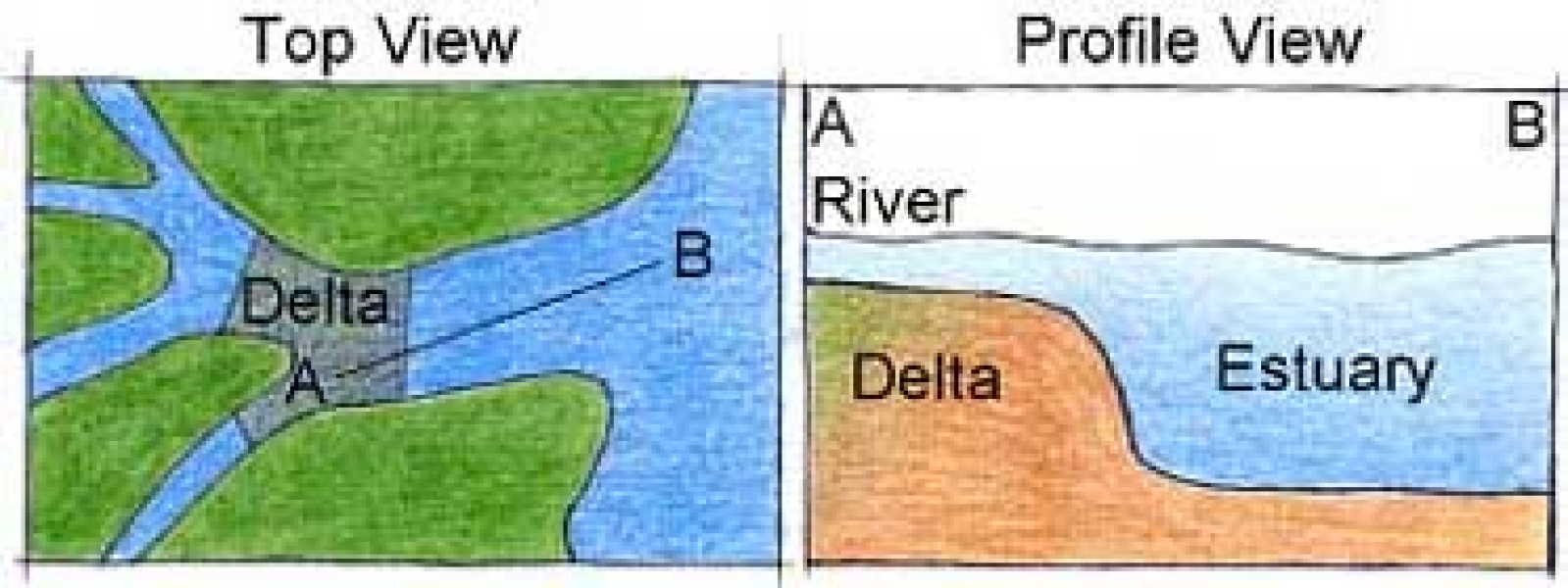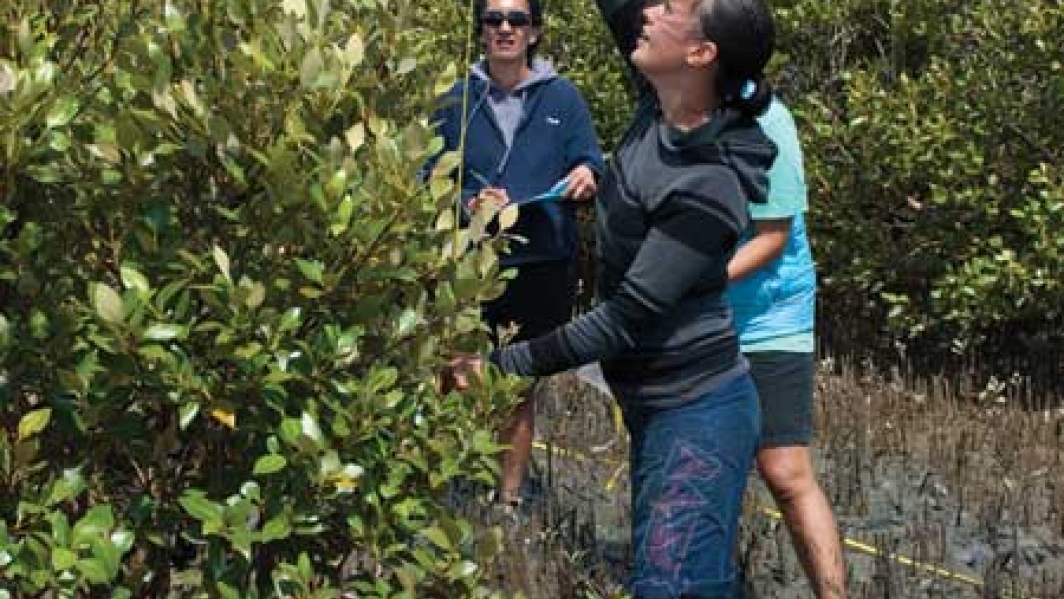An estuary is a partially enclosed body of water formed where freshwater from the land meets and mixes with saltwater from the ocean.
Estuaries vary in size and can also be termed bays, lagoons, harbours, inlets, sounds, wetlands and swamps
How are estuaries formed
Sea level has slowly risen over the last 15 000 years remaining stable over the last 6000 years. As the sea rose it drowned river valleys and filled glacial troughs. Once formed, estuaries make good sediment traps, filling with sediment from both the land and the sea. Sediment from the land include muds and clays delivered by rivers while sediments from the sea are usually clean sands pushed into the estuary by waves and tidal currents. Sediment can also come from shoreline erosion, windblown sediment and shell production.
Estuaries have many shapes and sizes depending on how they were formed. In New Zealand about three hundred and one estuarine systems have been identified ranging from a few hectares to 15000 hectares. 164 are bar built estuaries, 56 are drowned river valleys, 65 are lagoons and 16 are fjords. We have an example of every type of estuary. This variety is due to varied geology, rainfall, land use, coastal wave climate and different basin shapes and the degree of infilling.
Types of estuaries
Learn more about estuary classifications
Bar-built estuaries
Bar-built estuaries form when a shallow lagoon or bay is protected from the ocean by a sand bar, sand delta or barrier island. Examples of these are found along the west coast of the North Island, eastern Coromandel and the Avon Heathcoate Estuary in Christchurch.
Tectonic estuaries
Tectonic estuaries are caused by the folding or faulting of land surfaces. These estuaries are found along major fault lines, like the Manukau Harbour in Auckland.
Coastal plain estuaries
Coastal lain estuaries are formed by the sea level rising and filling an existing river valley. Examples of this are the Okura estuary, North Auckland.
Fjords and rias
Fjords and rias are U-shaped valleys formed by glacial action. Fjords are found in areas with long histories of glacier activity, seen along the west coast of the South Island. A fjord has a sill and a ria does not.
Examples of estuaries
- Barrier enclosed lagoons e.g. Tairua
- River mouth estuaries e.g. Mokau
- Coastal embayments e.g. Coromandel Harbour
- Drowned river valleys e.g. Raglan
- A semi enclosed bay e.g. Firth of Thames
Estuarine ecosystems
- These are areas where both ocean and land contribute to a unique ecosystem.
- A basic feature is the instability of an estuary due to the ebb and flood of the tide.
- Plant and animal wastes are washed away, sediment is shifted and fresh and salt water are mixed.
- Estuaries provide a calm refuge from the open sea for millions of plants and animals.
- The diversity of habitats enclosed in estuaries supports enormous abundance and diversity of species e.g. fish, shellfish, lobsters, marine worms, reeds, seagrasses, mangroves, algae, and phytoplankton.
- Visiting species include birds which roost and feed, pelagic fish to spawn and use as nurseries.
- Estuaries are among the most productive environments on earth.
- 4 times more productive in plant matter than a rye grass pasture and 20 times more productive than the open sea. Extremely rich in organic matter and nutrients.
- Photosynthesis occurs throughout the water column and on the sediment surface – very productive.
- The margins of the estuary contain the food webs important producers e.g. algae, eelgrass, rushes and mangroves providing a huge amount of organic matter. Marshes and mangroves produce up to ten tones of plant detritus per hectare per year – considered organic factories.
- Sediments are important as they store organic matter and are the site of microbial activity.
- Micro organisms decompose complex organic compounds into useable forms – ammonia, nitrates and phosphates. This becomes the basic food for primary consumers like crabs, shellfish, snails, and marine worms. These burrowing invertebrates – especially sediment feeders continually turn over the deposited material.
- Filter feeders such as cockles and pipis continually add faecal deposits to the sediment.
- Visiting animals from land, sea and fresh water use the estuary for feeding, breeding, spawning and as nurseries for their young. Food is abundant and easy to access because of the shallow water attracting many types of birds including gulls, ducks and wading birds.
- 20 species of bird visit the Avon-Heathcote estuary in Christchurch.
- At least 30 species of commercial fish use New Zealand estuaries at some stage in their life cycle. Include snapper, flounder, mullet, rock fish, sole, kahawai, trevally, parore, red cod and gurnard. Freshwater eels, salmon, and whitebait migrate through estuaries at least twice in their life cycle.
- Many species of shark use estuaries as pupping grounds. They bear their young in the estuary. These young use the estuary for food and shelter until they are ready to head out to the ocean.
- Plants and animals have adapted specially for the different habitats of this unique ecosystem.
Estuarine habitats
Estuaries enclose a diverse range of habitats from subtidal areas to intertidal areas. These include:
- sheltered upper estuary mangroves, seagrass beds and marshes
- highly energetic beaches on the ocean side of the estuary
- rocky reefs
- wave built bars in estuary mouths
- deep estuarine channels where swift tidal currents flow
- shallow open salt water and fresh water
- river deltas
- tidal pools
- muddy fringing marshes
- mid-estuary sand banks
- intertidal flats
- estuarine beaches
Mangrove habitat
Mangroves provide coastal protection, stabilize mudflats and provide important habitats for a range of animals. They are on of the worlds most productive vegetation types. The leaves they shed form a nutrient compost providing a valuable food source for many organisms.
Mangrove communities include shellfish, worms, crabs, shrimp and other crustaceans living on and in the sediment around the trees. Barnacles, snails and oysters live on the trunks and aerial roots and spiders , insects and birds live amongst the leaves and branches.
Mangroves are one of the starting points in estuarine food webs. Mangroves have become protected habitats in many countries including New Zealand showing a change in people’s perception.
Estuarine nutrient cycling
Nutrients are taken up by plants or recycled by sediments. Nutrients are controlled by inputs from land, plant biomass and tidal flow. Estuaries are important sites of nutrient recycling in the coastal environment. Estuaries have a continuous source of nutrients from their freshwater inputs. These freshwater inputs often have additional nutrients compared to the natural situation because they receive wastes from cities towns and farms. The balance of nutrients in an estuary depends on the amount of input from the land, how much is taken up by plants or re-cycled in the sediments within the estuary and how much is exported or imported to and from the ocean in the tidal water.
Nutrients within the estuary are used by plants such as algae in the water, seagrasses, seaweeds and mangroves and they enter other parts of the food web when plants are grazed on by invertebrates. When the plants, or parts of them die, nutrients are re-cycled within the estuary by the actions of invertebrates and bacteria.
Some nutrients are essential to support the productivity of estuaries. Too many nutrients however, can alter the balance of nutrient cycling and lead to undesirable plant growths such as blooms of phytoplankton or seaweeds.
Why are estuaries valuable?
Ecological value
Estuaries are one of the most productive ecosystems on earth.
They maintain water quality through natural filtration as microbes break down organic matter and sediments bind pollutants. Wetlands that fringe many estuaries also have other valuable functions. Water draining from the land carries sediments, nutrients, and other pollutants. Much of the sediments and pollutants are filtered out as the water flows through these fringing marshes. This creates cleaner and clearer water, which benefits both people and marine life. Wetland soils and plants like mangroves, sea grasses and reeds also act as a natural buffer between the land and ocean, absorbing floodwaters from land and storm surges from the ocean.
They help maintain biodiversity by providing a diverse range of unique habitats that are critical for the survival of many species. Thousands of birds, mammals, fish and other wildlife use estuaries as places to live, feed and reproduce. Migratory birds use estuaries to rest and gain food during their journeys. Many species of fish and shellfish use estuaries as nurseries to spawn and allow juveniles to grow.
Economic value
- They are tourist attractions.
- Used for transport and industry.
- They have ecological importance to commercial fisheries.
- Maintain water quality which benefits both people and marine life
- Natural buffer between the land and ocean, absorbing floodwaters and storm surges.
- They help maintain biodiversity by providing a diverse range of unique habitats that are critical for the survival of many species.
- Many species of commercially important fish and shellfish use estuaries as nurseries to spawn and allow juveniles to grow.
Cultural value
- People value estuaries for recreation, scientific knowledge, education, aesthetic and traditional practices. Boating, fishing, swimming, surfing, and bird watching are just a few of the numerous recreational activities people enjoy in estuaries. Unique estuarine habitats makes them valuable laboratories for scientists and students. Estuaries also provide a great deal of aesthetic enjoyment for the people who live, work, or use them for recreation.
- Estuaries were a resource sought after by Maori. Timber for building materials, rongoa (medicine), harakeke (flax) for weaving, kai (food) which included birds, fish, rats, eels, shellfish, humans. To make full advantage of this plentiful resource, Kainga, which were unfortified villages were established near estuaries.
- Eels were an important part of the Maori diet. They were caught by hand with a bob or eel pot. The bob was a huhu grub or worm attaches to a string or flax. The eels teeth were tangled in the fibres and the eel would then be landed. Camps were set up in favourable spots during the autumn spawning migration. The large number of eels caught were filleted and dried in the sun.
- Estuaries provide us with numerous resources upon which a dollar value cannot easily be placed. They offer benefits and services which greatly improve our lifestyle. Estuaries are an irreplaceable natural resource that must be managed carefully for the mutual benefit of all who enjoy and depend on them.
Why protect estuaries?
- Estuaries are the preferred site for human settlement. New Zealand has many examples including Invercargill, Dunedin, Christchurch, Nelson, Wellington, Napier, Tauranga, Auckland, and Whangarei.
- Estuaries receive the final impact of human activities throughout the catchment. This means the use of the surrounding land and the rivers draining into them. Rubbish dumping, pollution, reclamation, trampling by stock, urban and industrial development and recreational pressures are some of the immediate impacts.
- Indirect threats – human induced erosion may cause accelerated siltation affecting plant and animal communities.
- Infilling can be accelerated by poorly managed urban development or forest clearance which increases the runoff. This can increase the turbidity of the water, accelerate sedimentation and spread of silts, muds and clay throughout the estuary. Sediments trap pollutants like fertilizer run off, petroleum by-products, persistent pesticides and heavy metals. Where fertilizer runoff is trapped in the sediment the process of organic decomposition by microbes speeds up depleting oxygen to dangerously low levels. Toxic compounds like ammonia and hydrogen sulphide accumulate and can be harmful to other estuarine organisms. All this may decrease the health and diversity of habitats. Fringing communities are the most productive areas of an estuary – they are also the most sheltered and shallow parts which makes them ideal targets for land reclamation and dredging. This may alter the entire balance of the food web.
This resource was prepared with input from the FRST-funded programmes "Effects of Sediments on Estuarine and Coastal Ecosystems" (C01X0024) and "Fish Usage of Estuarine and Coastal Habitats" (C01X0025).
Resource prepared by Bernard Potter RSNZ Teacher Fellow 2001, NIWA


